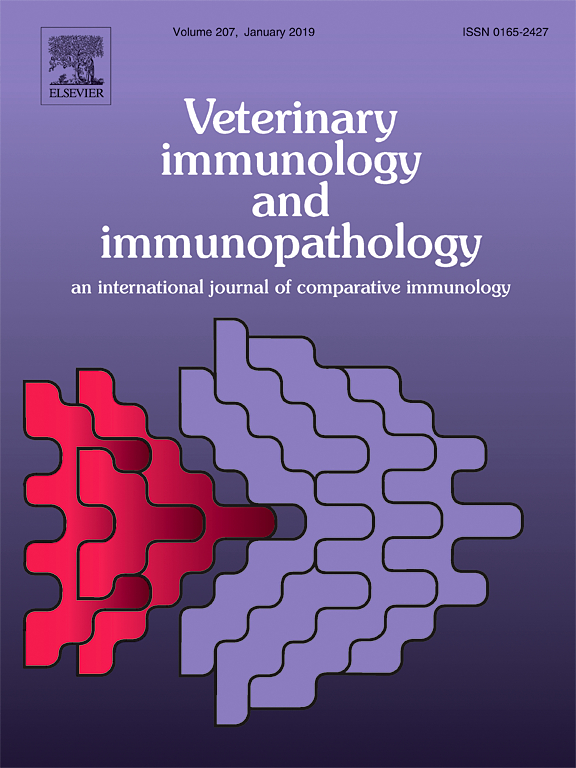Ver ítem
- xmlui.general.dspace_homeCentros e Institutos de InvestigaciónCICVyA. Centro de Investigación en Ciencias Veterinarias y AgronómicasInstituto de PatobiologíaArtículos científicosxmlui.ArtifactBrowser.ItemViewer.trail
- Inicio
- Centros e Institutos de Investigación
- CICVyA. Centro de Investigación en Ciencias Veterinarias y Agronómicas
- Instituto de Patobiología
- Artículos científicos
- Ver ítem
Polymorphisms at the 3′ untranslated region of SLC11A1 gene are associated with protection to Brucella infection in goats
Resumen
Goats are susceptible to brucellosis and the detection of Brucella-infected animals is carried out by serological tests. In other ruminant species, polymorphisms in microsatellites (Ms) of 3′ untranslated region (3′UTR) of the solute carrier family 11 member A1 (SLC11A1) gene were associated with resistance to Brucella abortus infection. Goats present two polymorphic Ms at the 3′UTR end of SLC11A1 gene, called regions A and B. Here, we evaluated if
[ver mas...]
Goats are susceptible to brucellosis and the detection of Brucella-infected animals is carried out by serological tests. In other ruminant species, polymorphisms in microsatellites (Ms) of 3′ untranslated region (3′UTR) of the solute carrier family 11 member A1 (SLC11A1) gene were associated with resistance to Brucella abortus infection. Goats present two polymorphic Ms at the 3′UTR end of SLC11A1 gene, called regions A and B. Here, we evaluated if polymorphisms in regions A and/or B are associated with Brucella infection in goats. Serum (for the detection of Brucella-specific antibodies) and hair samples (for DNA isolation and structure analysis of the SLC11A1 gene) were randomly collected from 229 adult native goats from the northwest of Argentina. Serological status was evaluated by buffer plate antigen test (BPAT) complemented by the fluorescent polarization assay (FPA), and the genotype of the 3′UTR of the SLC11A1 gene was determined by capillary electrophoresis and confirmed by sequence analysis. Polymorphisms in regions A and B of the 3′UTR SLC11A1 gene were found statistically significant associated with protection to Brucella infection. Specifically, the association study indicates statistical significance of the allele A15 and B7/B7 genotype with absence of Brucella-specific antibodies (p = 0.0003 and 0.0088, respectively). These data open a promising opportunity for limiting goat brucellosis through selective breeding of animals based on genetic markers associated with natural resistance to B. melitensis infection.
[Cerrar]

Fuente
Veterinary Immunology and Immunopathology 160 (3–4) : 230-234 (August 2014)
Fecha
2014-08-15
Editorial
Elsevier
ISSN
0165-2427
Formato
pdf
Tipo de documento
artículo
Palabras Claves
Derechos de acceso
Restringido
 Excepto donde se diga explicitamente, este item se publica bajo la siguiente descripción: Creative Commons Attribution-NonCommercial-ShareAlike 2.5 Unported (CC BY-NC-SA 2.5)
Excepto donde se diga explicitamente, este item se publica bajo la siguiente descripción: Creative Commons Attribution-NonCommercial-ShareAlike 2.5 Unported (CC BY-NC-SA 2.5)

